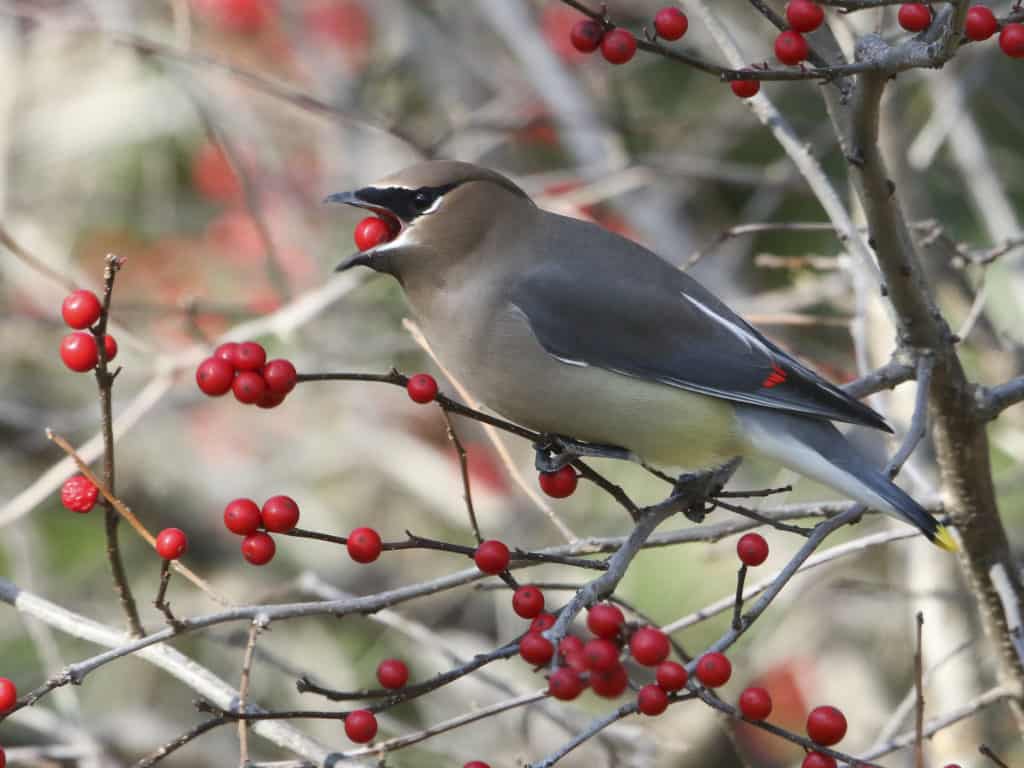Creature Feature

Gifts to Get You Outside
By Wayne Bierbaum
Despite being busy with work, I do as many outdoor activities as possible. Animal watching and photography are my number one diversions. I have some favorite items that I bring with me on my outdoor walks and recommend them as gifts for outdoor enthusiasts.
Since bird watching (birding) is now one of the top outdoor activities, a pair of good binoculars makes an excellent gift. To understand the differences in brands and types, here are some basics. The two types of binoculars are the roof prism and Porro prism. Prisms are needed to flip the image back to upright and normal after it is magnified. Roof prisms are the sharpest and sturdiest of the two and the most expensive. Those binoculars look like two connected straight tubes. The Porro prism binoculars have two tubes that are wide apart connected to a rectangular piece with two eyepieces. Most marine glasses are this type.
The two numbers that further describe binoculars, such as 8×35, are the magnification (8) and the diameter of the front lens (35mm). With the eight-magnification power being a standard, higher magnification is harder to handle. Hand tremors and even heartbeats cause the lens to shake, and makes it difficult to see a stable image at higher magnifications. My camera has a very narrow viewing angle, so I use my binoculars to scan for animals that I can than focus my camera on. A magnification of eight is best for my use. The size of the front lens matters as the larger the number, the more light is gathered and the brighter the image. The downside is, the bigger the number, the heavier the binoculars.
Better quality lenses will have a sharp image and good color from edge to edge but the prices go a little crazy. The best are Swarovski 8.5×42, which cost $2,900, and equally excellent binoculars are Vortex Razor 8×42, which cost $2,819. Good binoculars will cost between $150 and $300. I really like my Vortex Diamond 8×42, now priced at $270, but Celestron Trail Seeker ($300) and Nikon Monarch ($280) are rated as about equal. Ten power binoculars are only a little more expensive.
I think that a shoulder harness is a great addition to binoculars. The weight is distributed over both shoulders and not pulling on your neck. The binoculars don’t bounce when you walk and your hands are free. Vortex makes a good one but there are others available.
I use a digital single-lens reflex (DSLR) and a mirrorless camera, but they are expensive and hard to use. Compact cameras are less expensive and easier to use. Some have huge magnification (zooming) capabilities and produce decent images. Some examples: Nikon Coopix P1000, Panasonic LumixDC-FZ80 and Sony Cyber-shot DSC-HX400V. These cameras are good for stationary objects but not as good as a DSLR or mirrorless for birds in flight.
Wide-brimmed hats help in avoiding the sun but also I use it to hide my eyes from birds. Bending the hat over a camera hides my face from the animals and makes them less skittish. The hat I like is a waterproof Frog Tog wide-brimmed hat.
For the animals themselves, I think that giving native plants that help sustain them would be well received as presents. Winterberry holly has bright red berries around the holidays that birds, like cedar waxwings, love. Other holly trees also have berries that nourish wintering birds. Placing an order with spring delivery for several of the native species of milkweed (Asclepias) will help increase the falling numbers of monarch butterflies. Swamp milkweed and butterfly weed are species of Asclepias that have pretty flowers and a pleasant smell and adapt to humus filled gardens. They are a lovely gift for hungry monarch caterpillars.
